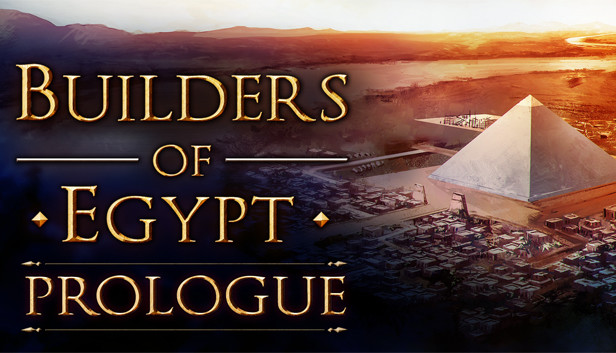A short guide introducing the basic game mechanics and Builders of Egypt Demo content.
Before you start
We’ve made for you a short guide introducing the base game mechanics along with Builders of Egypt Demo content.
You can either follow steps in the in-game short tutorial or skip it if you don’t want to build in order that the game will require from you. The tutorial will introduce you to the most basic aspects of the game so it’s quite useful but some players enjoy discovering on their own so it’s for you to decide which approach is better for you.
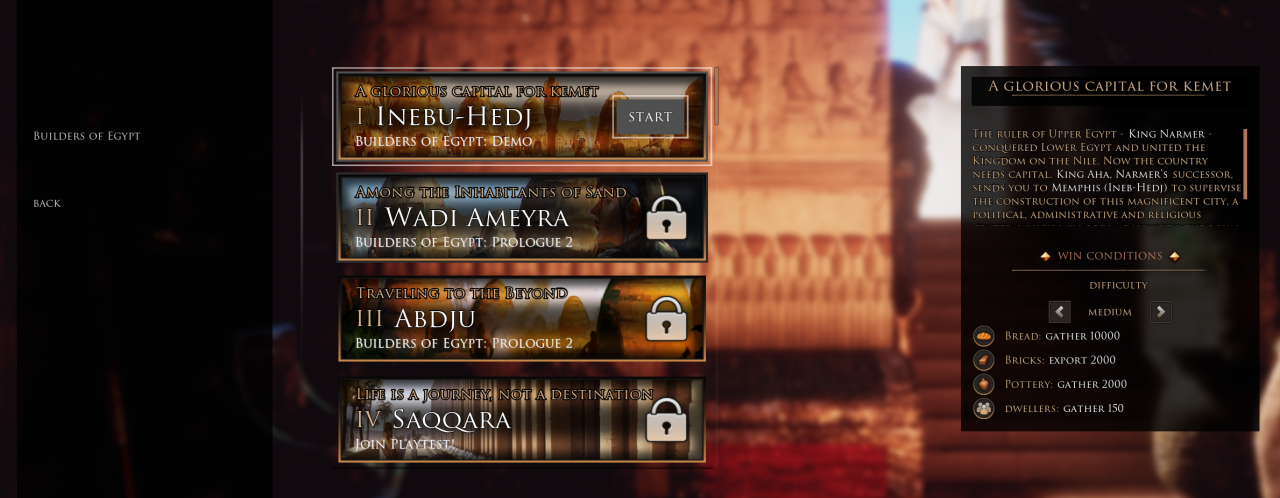
In-game user interface


The bottom menu has available buildings and tools like demolishing, cover maps for fire, tax collector, wares production, freshwater, health care, and police station along with buildings information.
All you need is bread!
Without bread, you can’t build, open trading routes, or pay your people for their hard work and the only thing they do is work for you. In other words, bread is your currency and you pay for everything with your most valued bread. Bread is also necessary when upgrading your housing to another level.
DEMOLISH TOOL
Notes regarding demolish tool (building cost refund will depend on game’s difficulty)
Demolition of an undamaged building – 100% refund of normal building cots (on easy difficulty)
Demolition of the damaged building – depends on the building, for example: size 2×2 size gives you 10 bread refund. Conditions for a refund on other difficulty levels will be implemented in the final release.
The game is based on the grid.
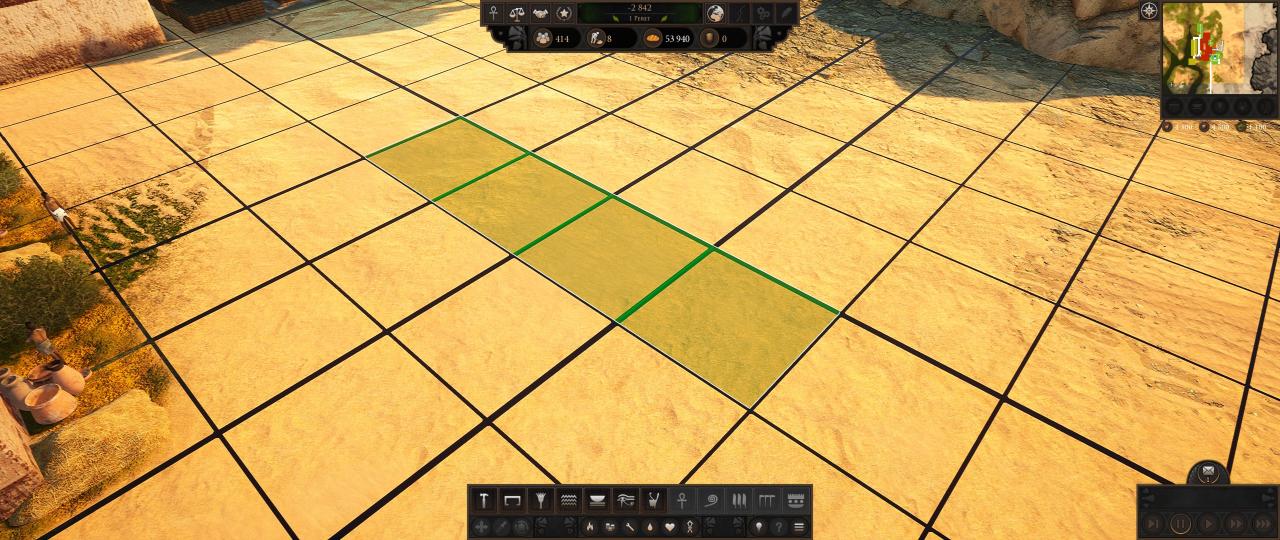
Housing and roads
IMPORTANT Roads should be built in a way that minimizes the time for your workers to get to certain buildings so for example – if you want to achieve higher efficiency in transporting straw from Farms to Stoclpiles remember to make a short direct connection. The longer the road the slower progress for example in production.
Placing empty houses will trigger people’s arrival.
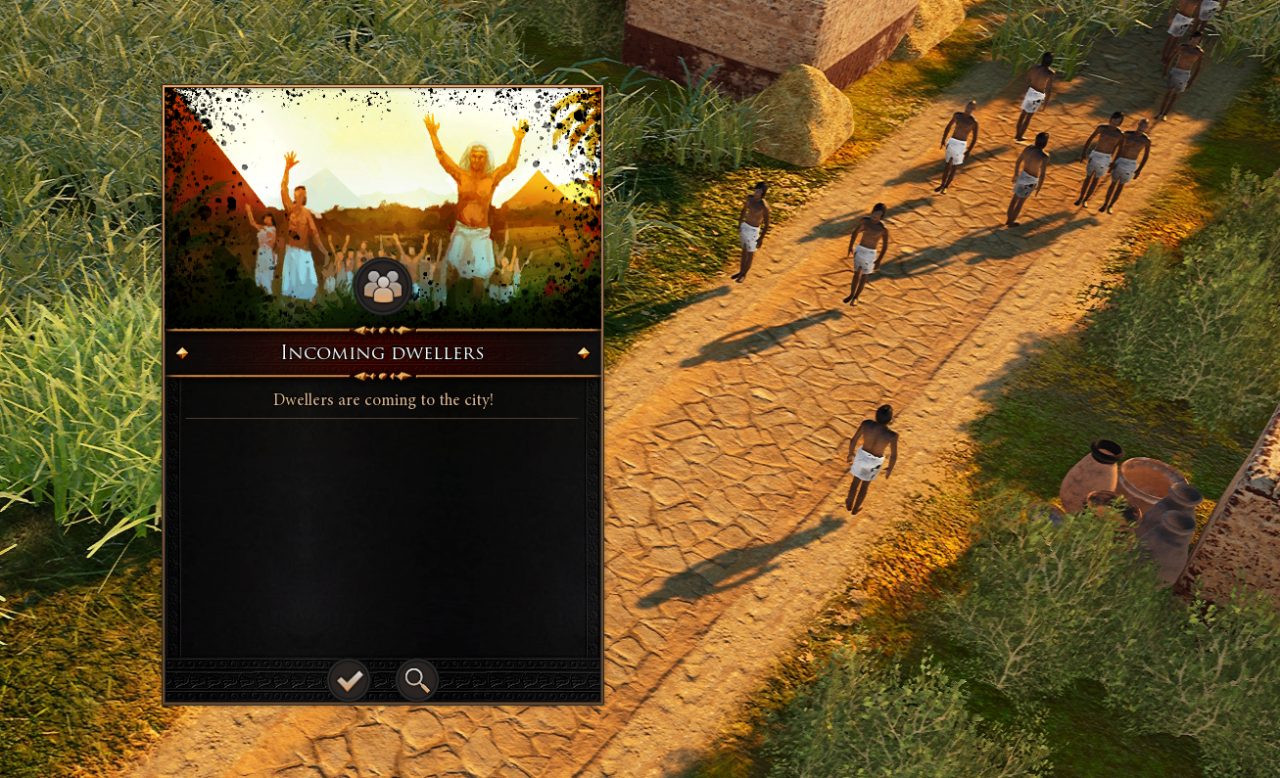
Your houses will evolve once you met housing requirements such as water access, bazaar access, certain goods, and services, etc. In Demo, you’ll need to satisfy the need for water and food only.

Examples of houses accommodation:
House Level 1 – 5 dwellers.
House Level 2 – 7 dwellers.
Houses and roads can be found in House and road TAB next to DEMOLISH tool.

Well, bazaar and fire station 😉
Water is provided by well and food – it’s being distributed by bazaar’s workers.
Well can be found in Sanitary TAB.
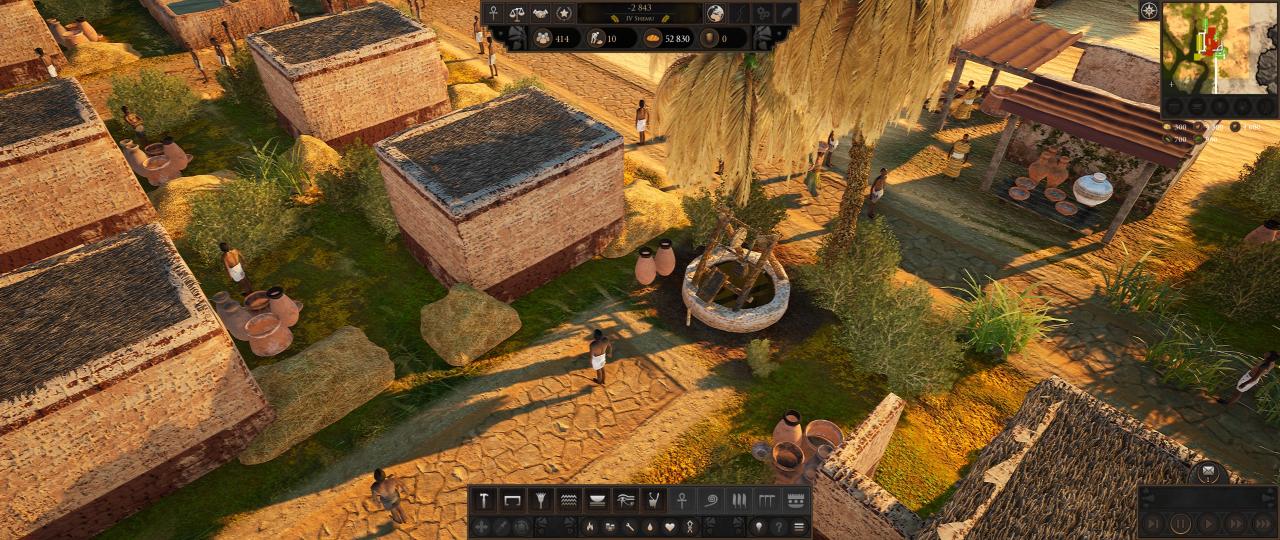
Bazaar and Firestation can be found in Administrative Buildings TAB.
Each bazaar can be set up to collect only specific goods:
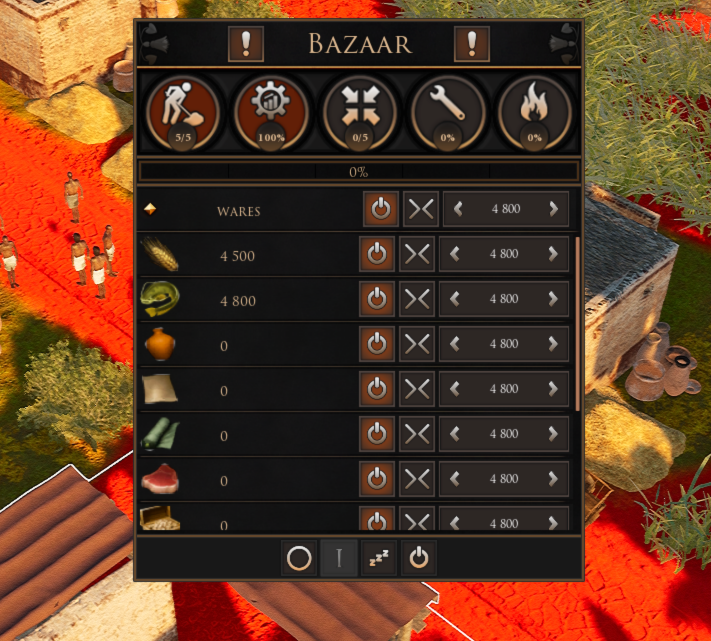
Transport routes for food
Farm (wheat) -> Granary -> Bazaar – > House
Fishing Wharf (fish) -> Granary -> Bazaar – > House
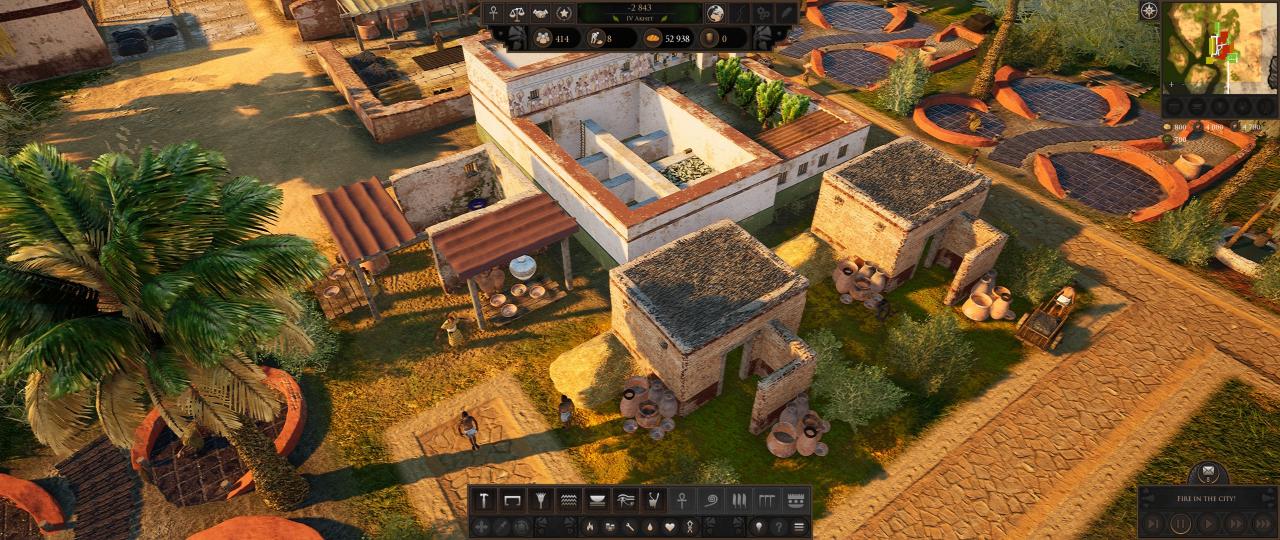
Depending on the used housing layout one well can support up to a dozen houses so it needs to be placed in strategic spots to cover as many houses as possible. Wells can’t be built everywhere so remember to place them on green tiles having in mind how you want to build your houses later. When choosing well from the bottom game menu, the game will show you areas where it can be built.
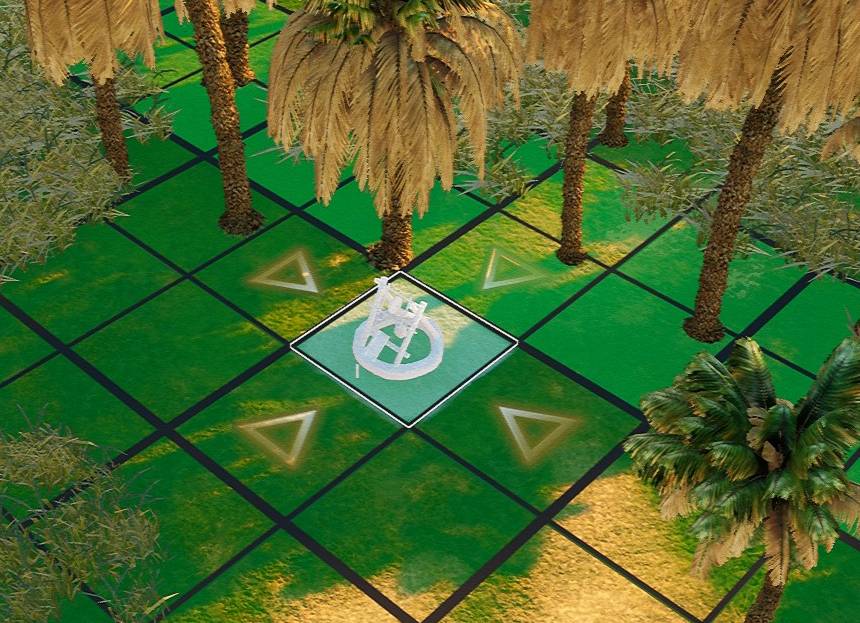
Second important thing is to prevent buildings from catching fire and for that, we have Fire Station. It has quite a large radius so you don’t need to build a lot of them at the beginning. With your settlement expansion remember to check the radius in the fires tab and cover the city area with fire stations.
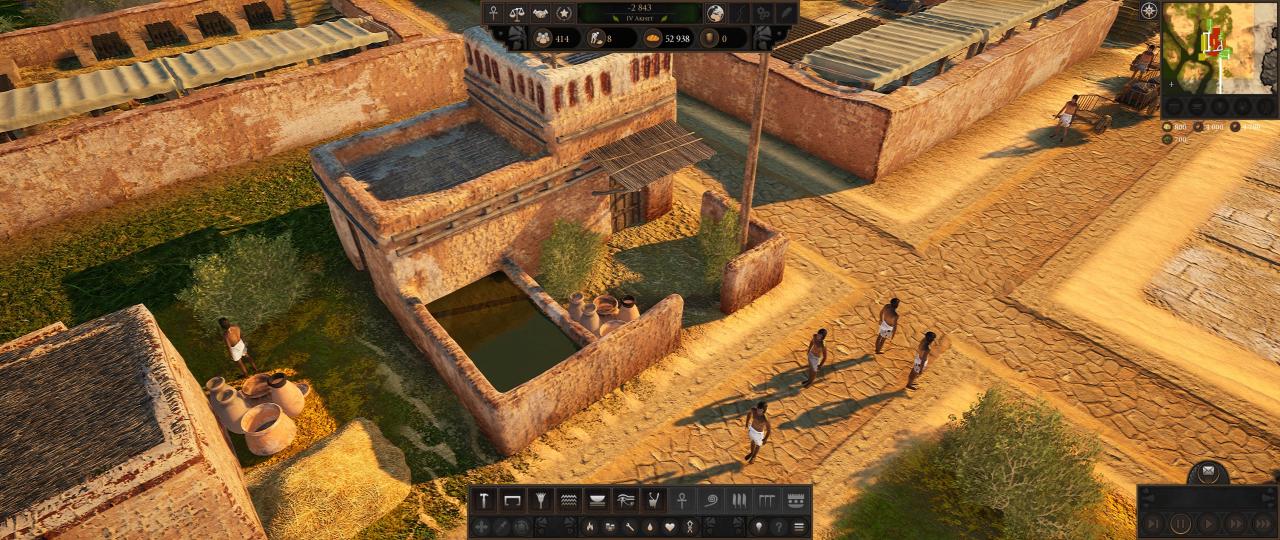
Food production – wheat, fish and Granary
Wheat farm (flood farm) will not only give you wheat but also the supply of straw, needed at Brick Maker to produce bricks. It can be built only on the edge of the river where the Nile River floods every year.
Farm and Fishing Wharf can be found in Food Production TAB.
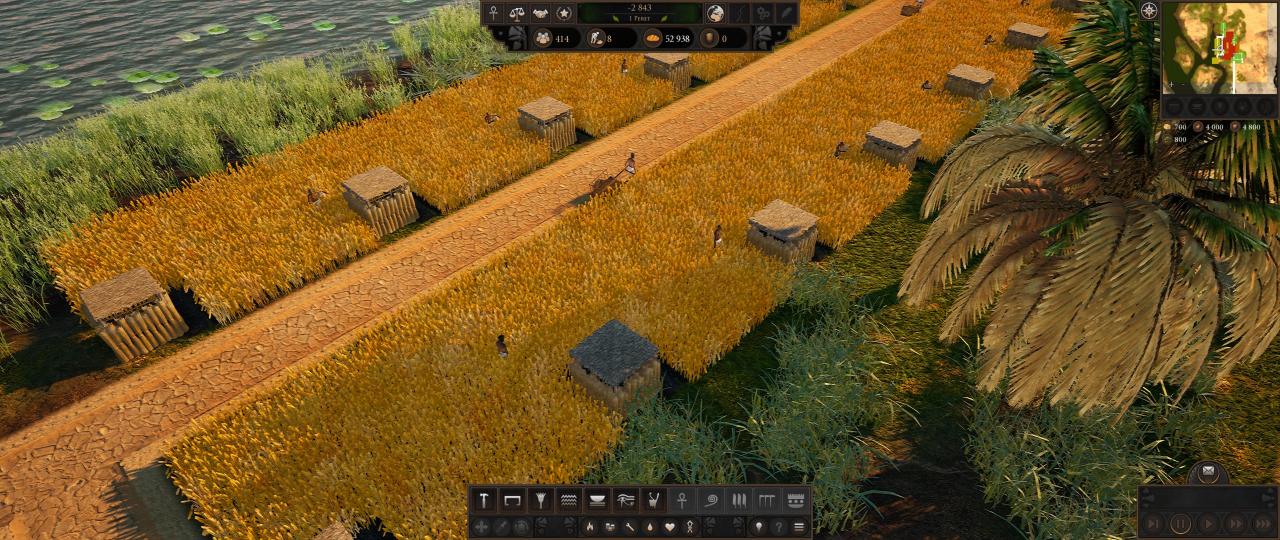
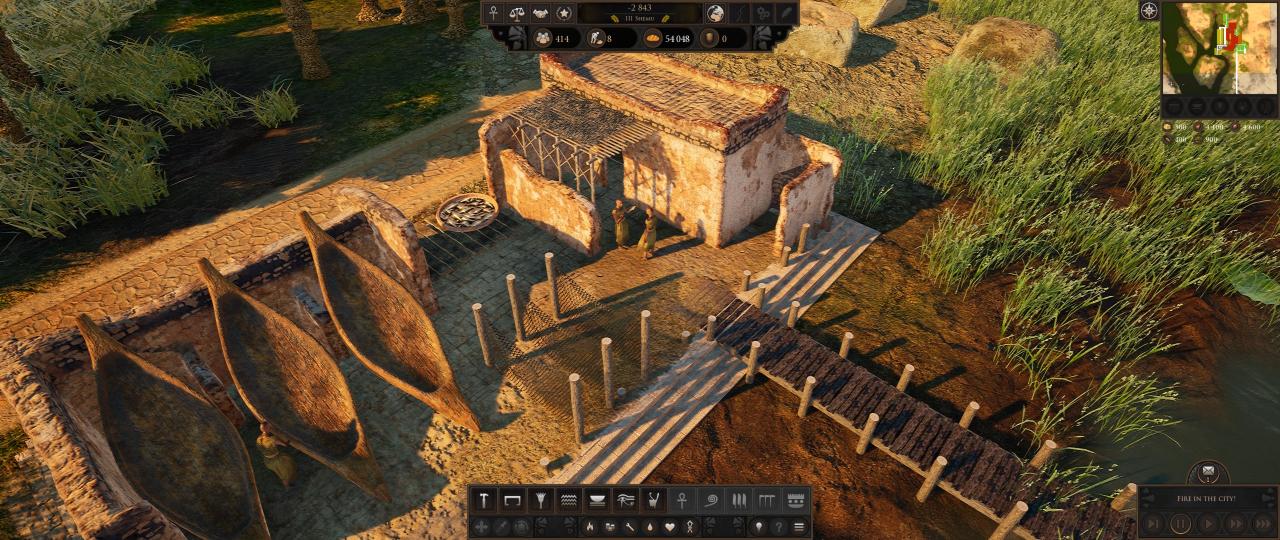
Granary can be found in Administrative Buildings TAB.
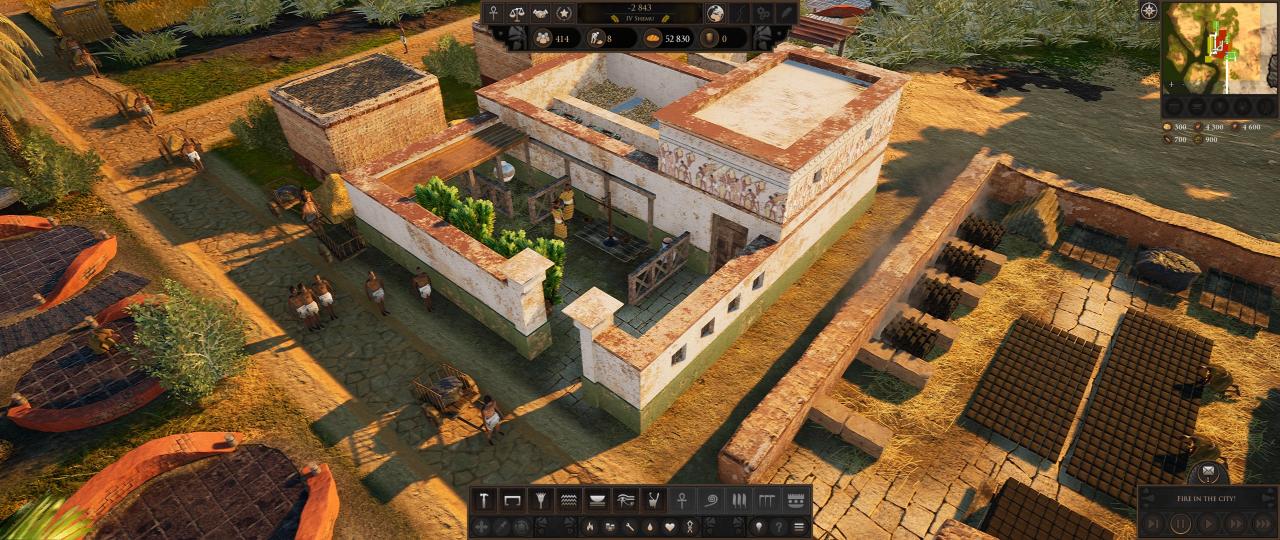
Another spot for 2 additional fishing wharfs available in demo.
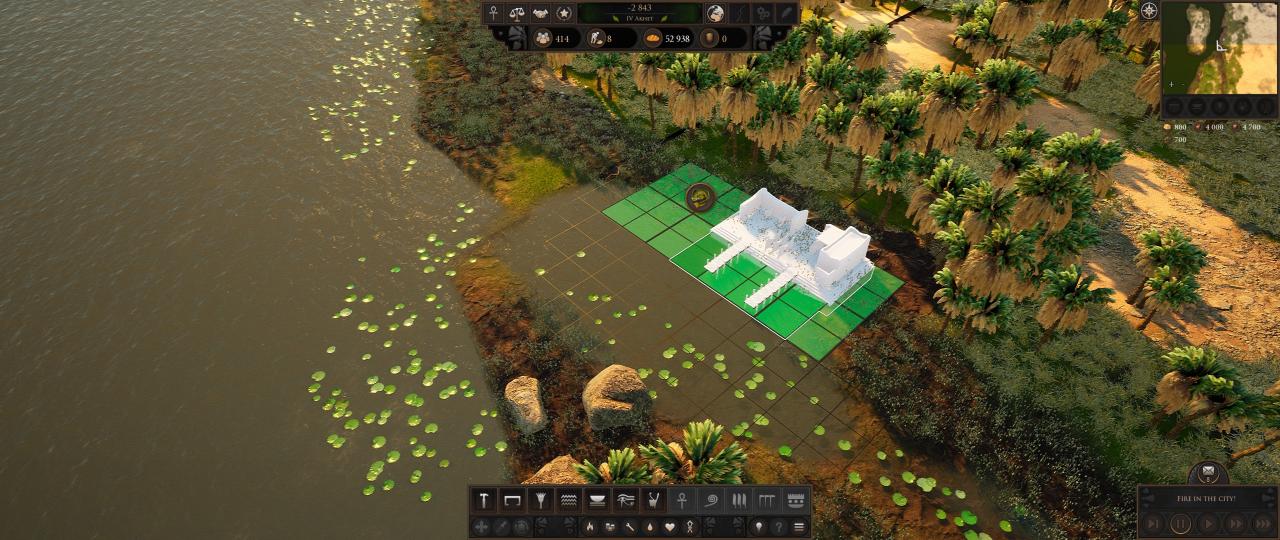
Below you can see your workers taking wheat to your Granary (at the beginning of the harvest season) and workers transporting fish from Fishing Wharf to Granary:
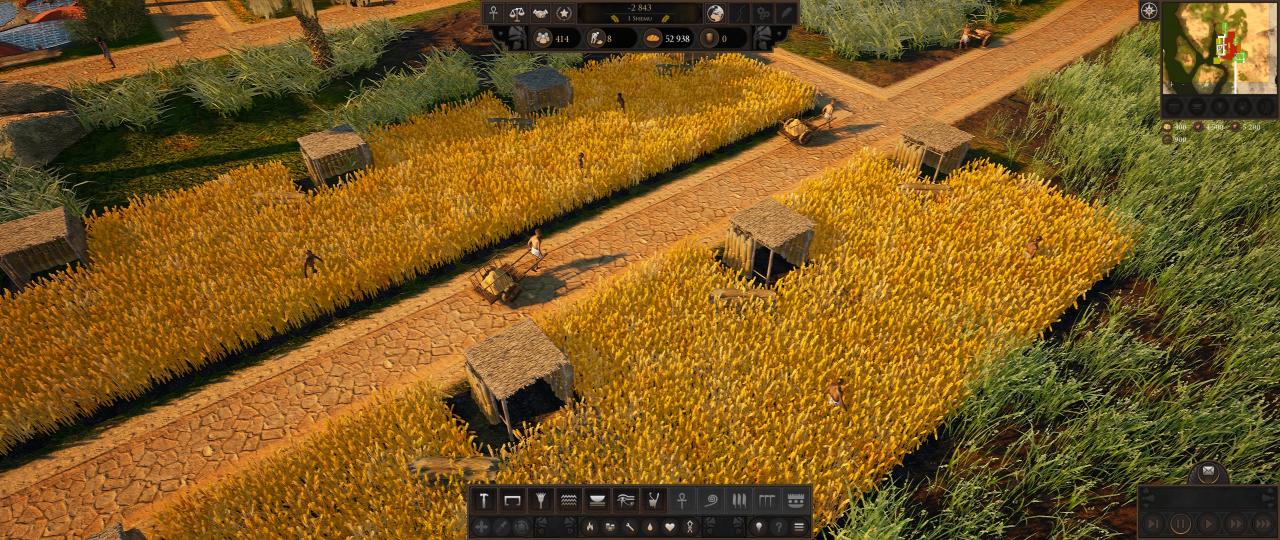
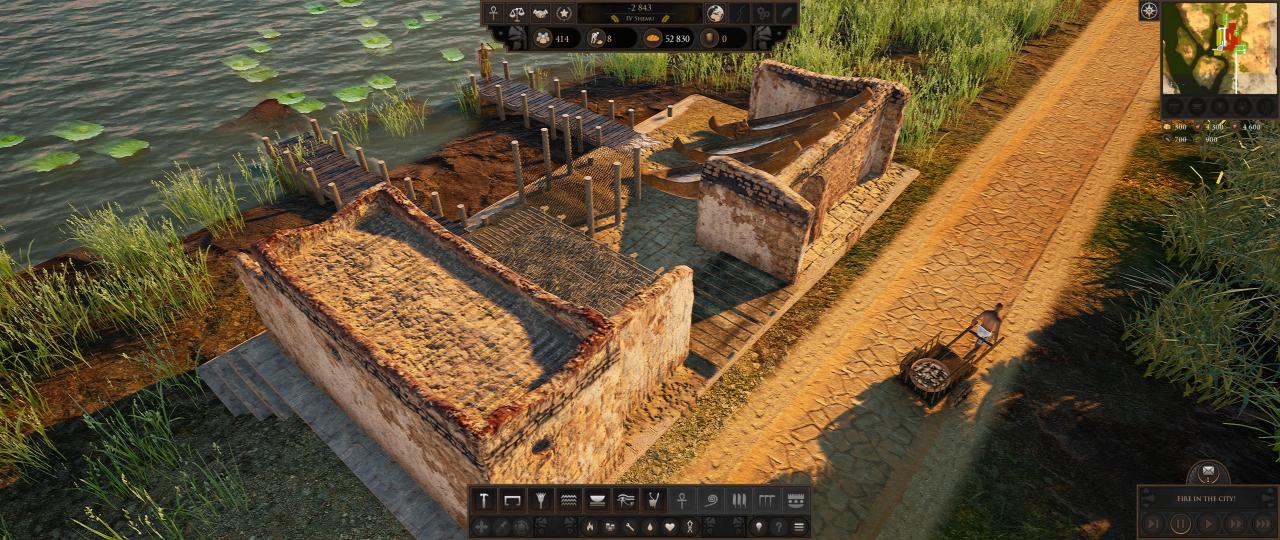
Stockpiles settings
Below you can see the setting for gathering and exporting bricks for Trader from Abydos.
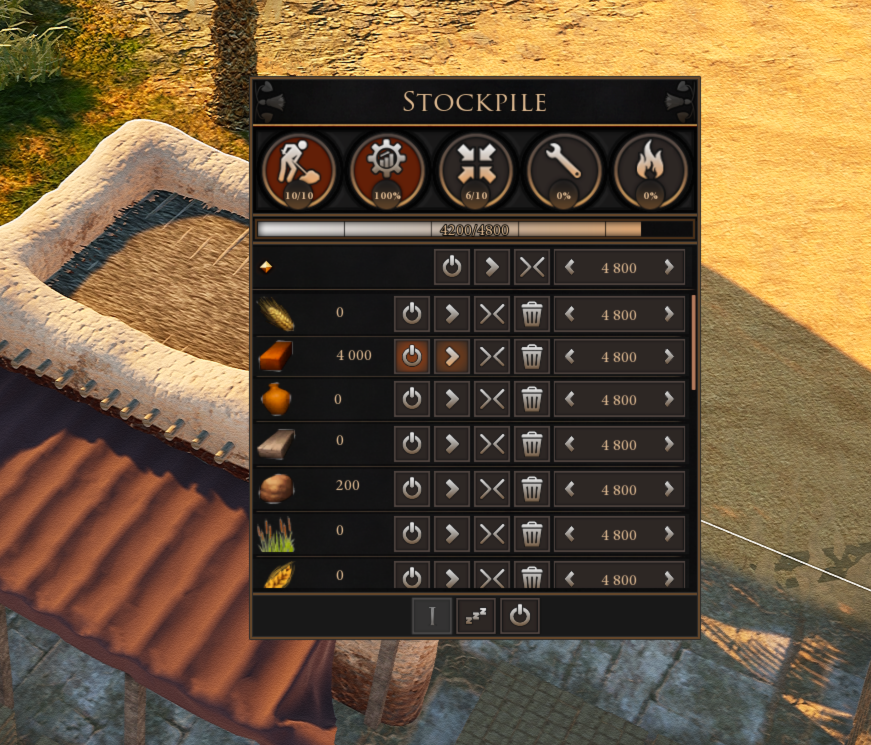
GATHER – to collect goods, transport them to stockpile, and transport them to other buildings using those goods.
EXPORT – to export goods and make them available for traders from Abydos.
COLLECT – to gather and store specific goods in your stockpile, goods won’t be transported to other buildings.

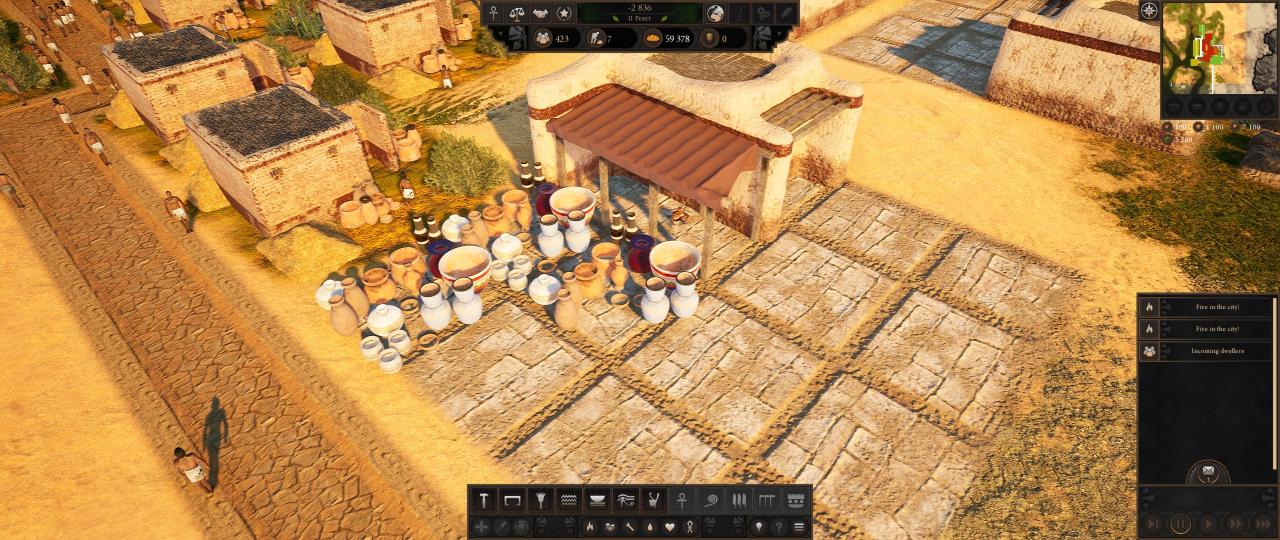
Wares production
Transport routes for ware production
Clay pit -> clay transported to Stockpile -> clay transported from Stockpile to Brick Maker.
Farm -> straw transported to Stockpile -> straw transported from Stockpile to Brick Maker.
Brick Maker -> brick transported to Stockpile -> brick transported from Stockpile to Potter.
Potter -> pottery transported to Stockpile.
Clay pit, Brick Maker, and Potter can be found in Ware Production TAB.
Clay, straw, bricks, pottery can be traded with another city in order to receive additional bread (when requested).
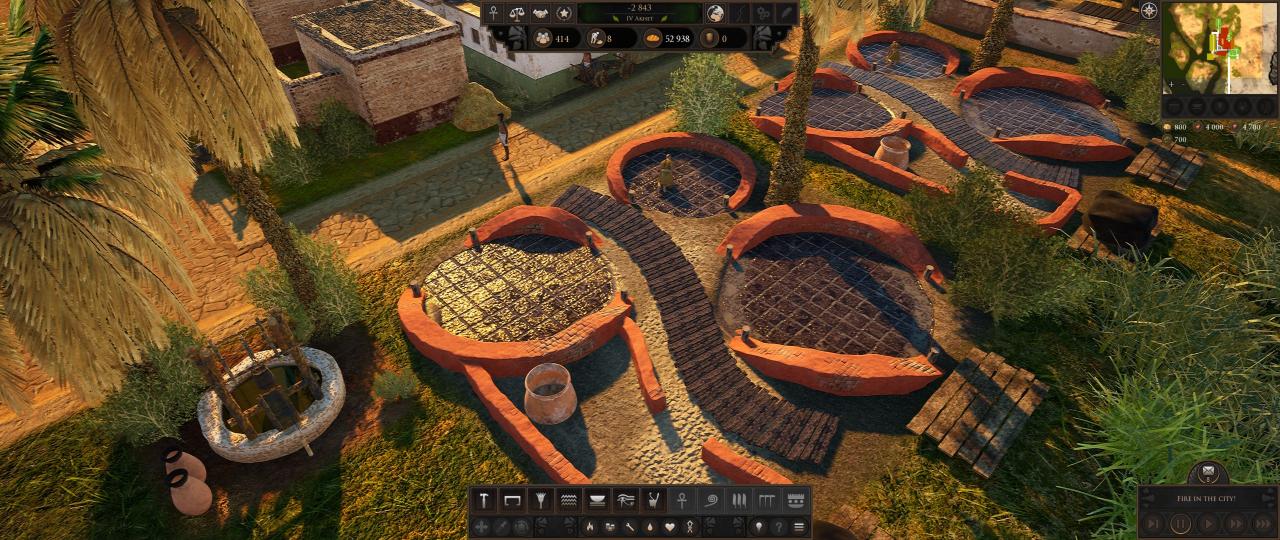
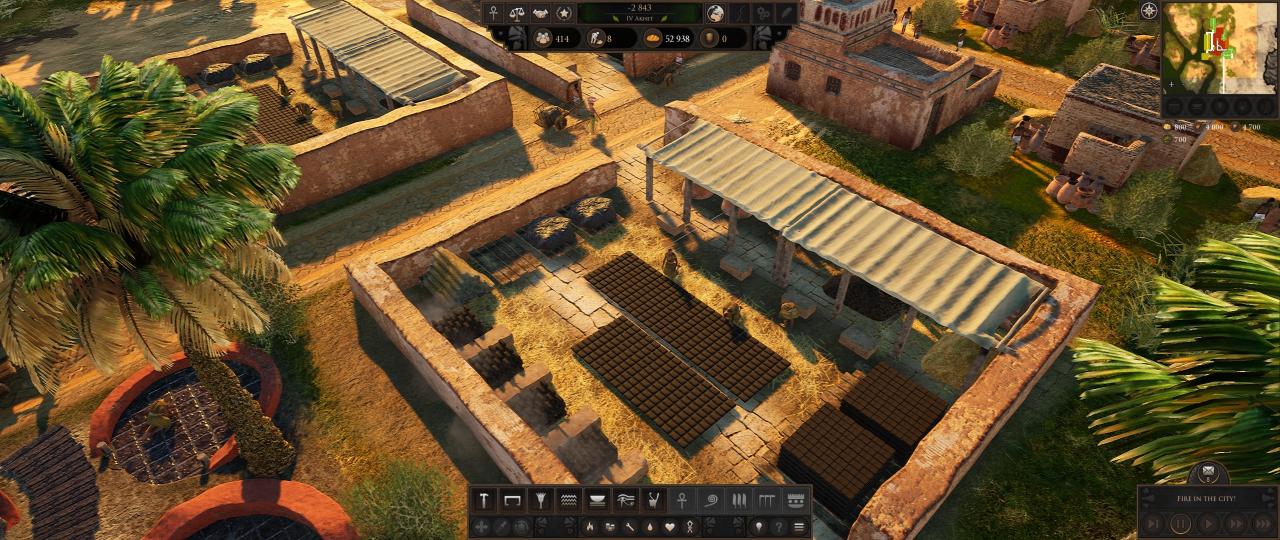
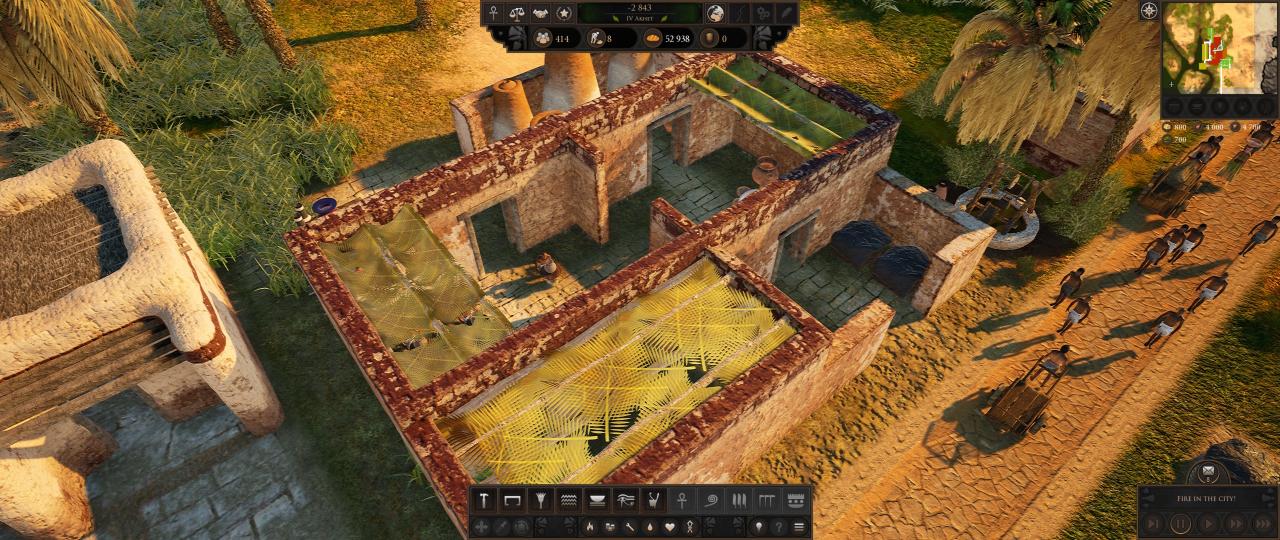
Diplomatic missions
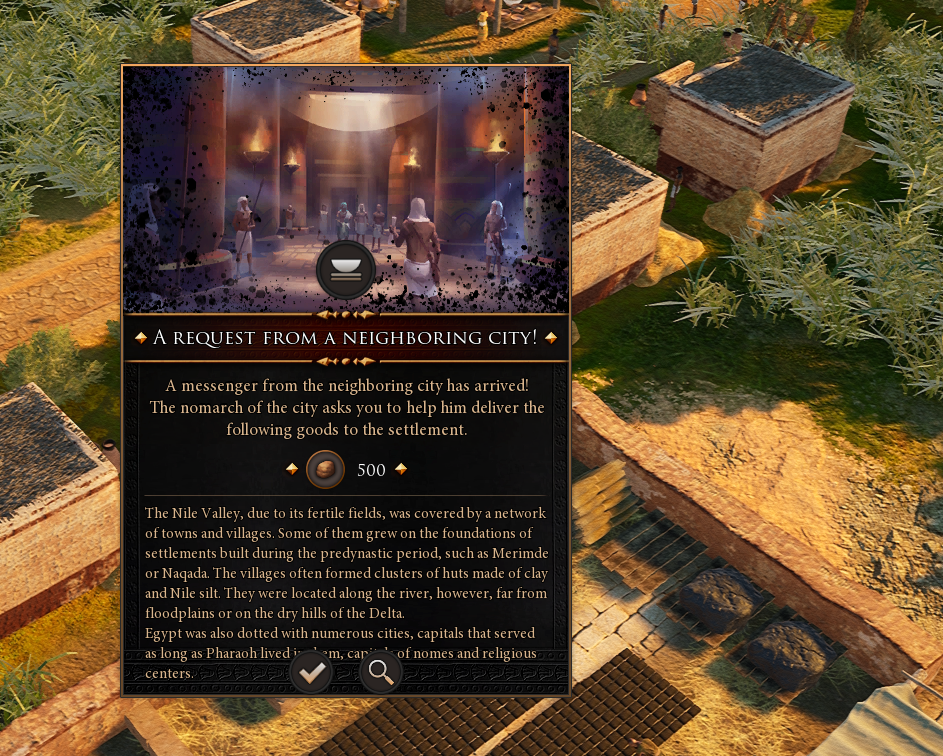
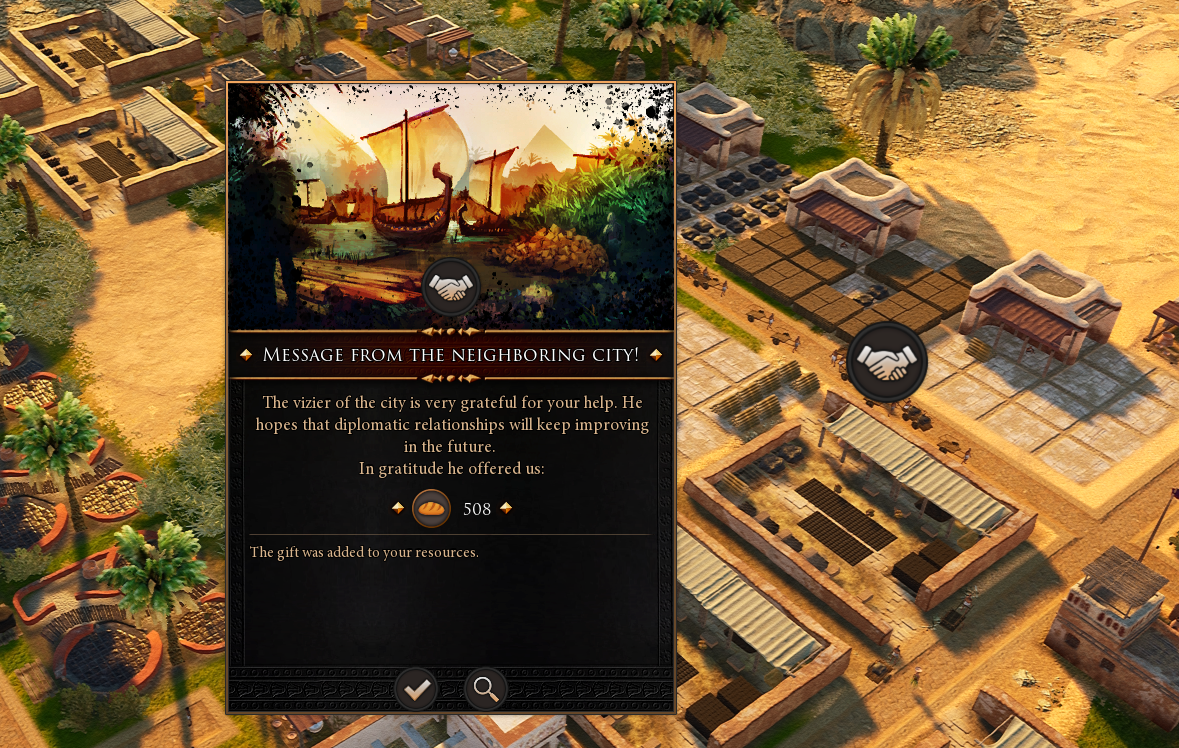
Trade with another city
Traders will pay you for your goods in bread. Once in a while, they will visit your city and go straight to your Stockpiles to buy goods that his interested in.
Goods for export can be set up in Economy TAB.
Below you can see how to set up export in your ECONOMY TAB.
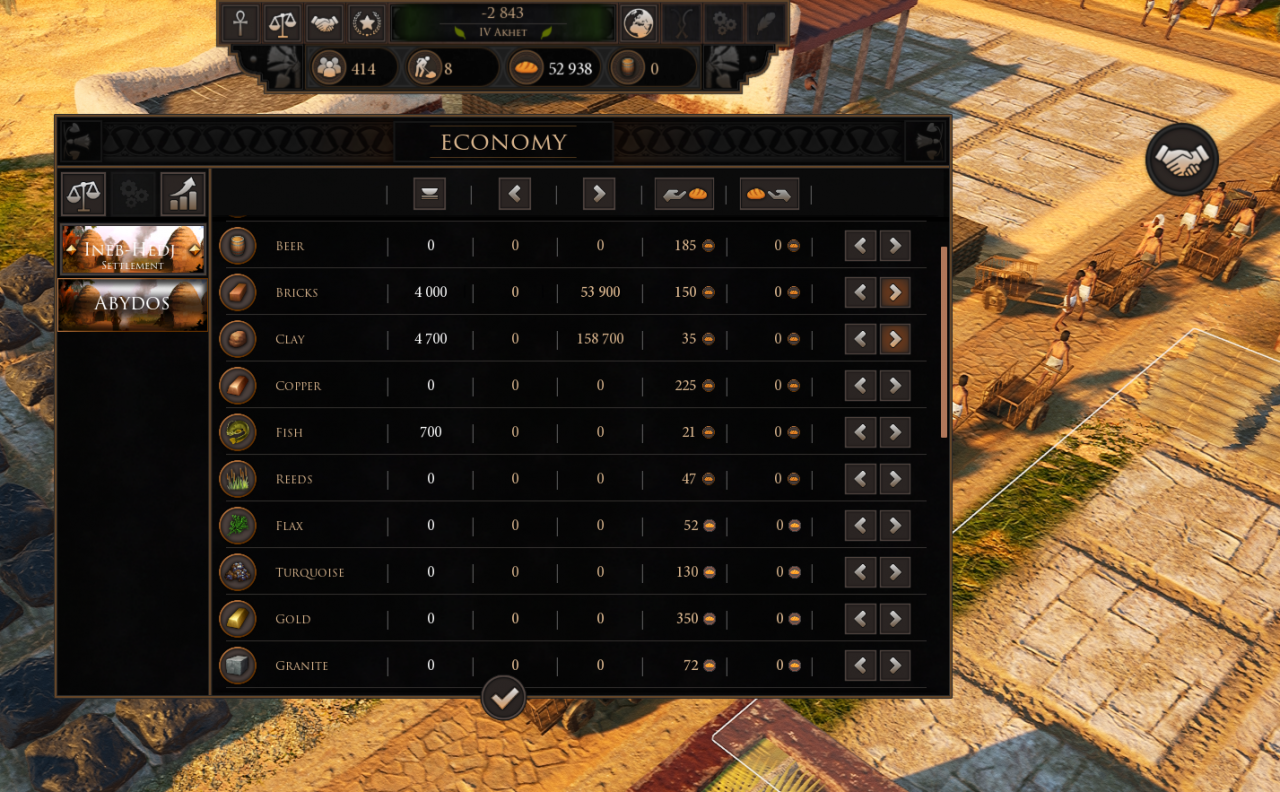
IMPORTANT Lowering wages or making your taxes higher won’t give you the same profit as trading with another city. Taxes are not implemented yet.
The trade route costs 200 bread. In Builders of Egypt Demo you can trade only with one city – Abydos.
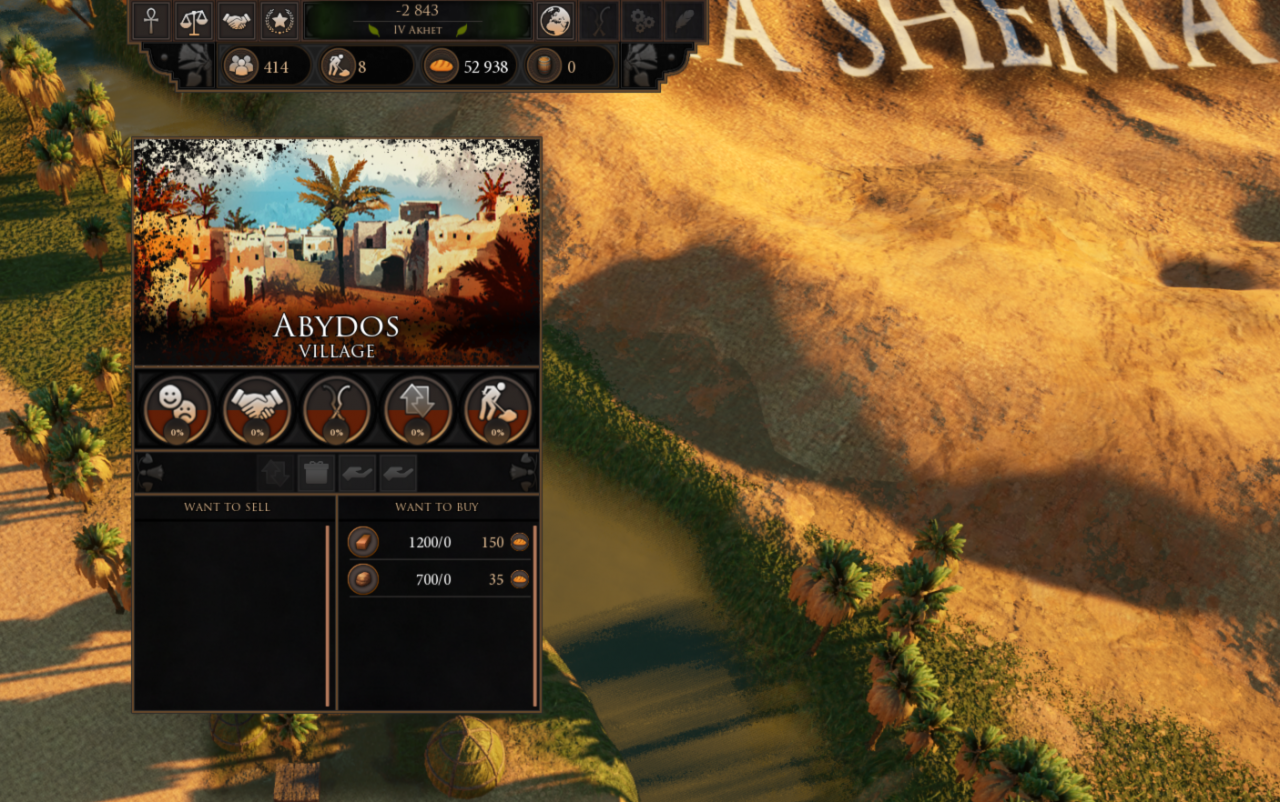
New World Map available with the latest demo showing also the trading city – Abydos.
Each year Abydos will buy from you bricks and clay.
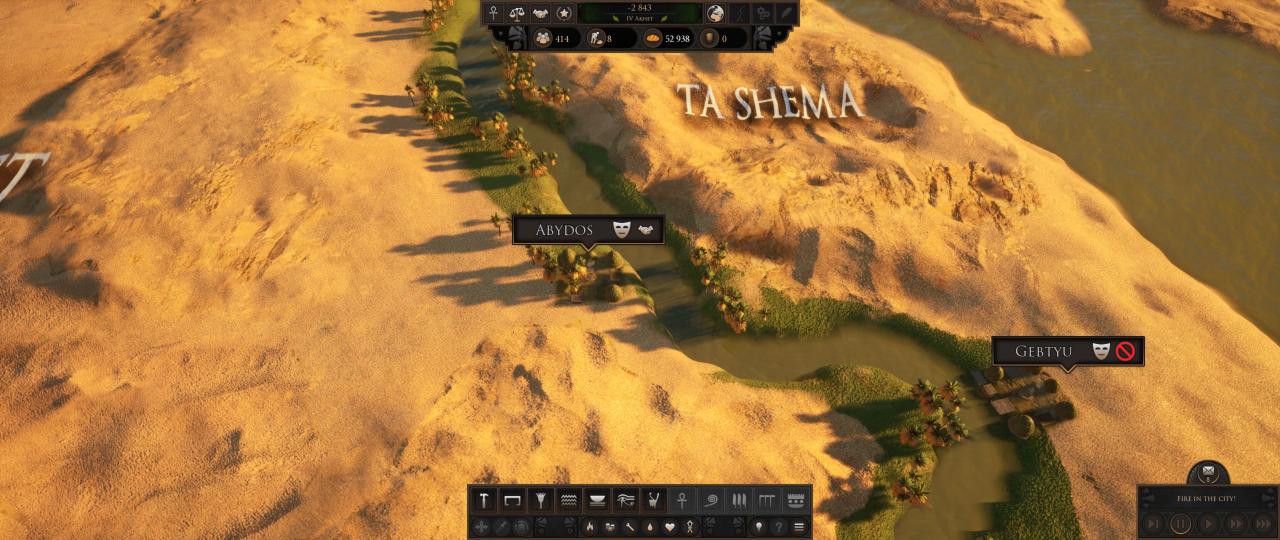
Fulfilling Builders of Egypt Demo’s goals
From time to time other cities will ask you for additional goods such as clay, straw, brick, pottery. Try to fulfill their requests – the more bread you have the better for you, especially when you want to expand and build an empire. 🙂
Playing with negative bread will have consequences in the final game so managing bread is the most important thing.
Depending on easy or medium difficulty your goals will change – for example by changing the amount of available bread at the start of the mission or by increasing the number of raw materials needed to complete the specific mission (below you can see goals for easy).
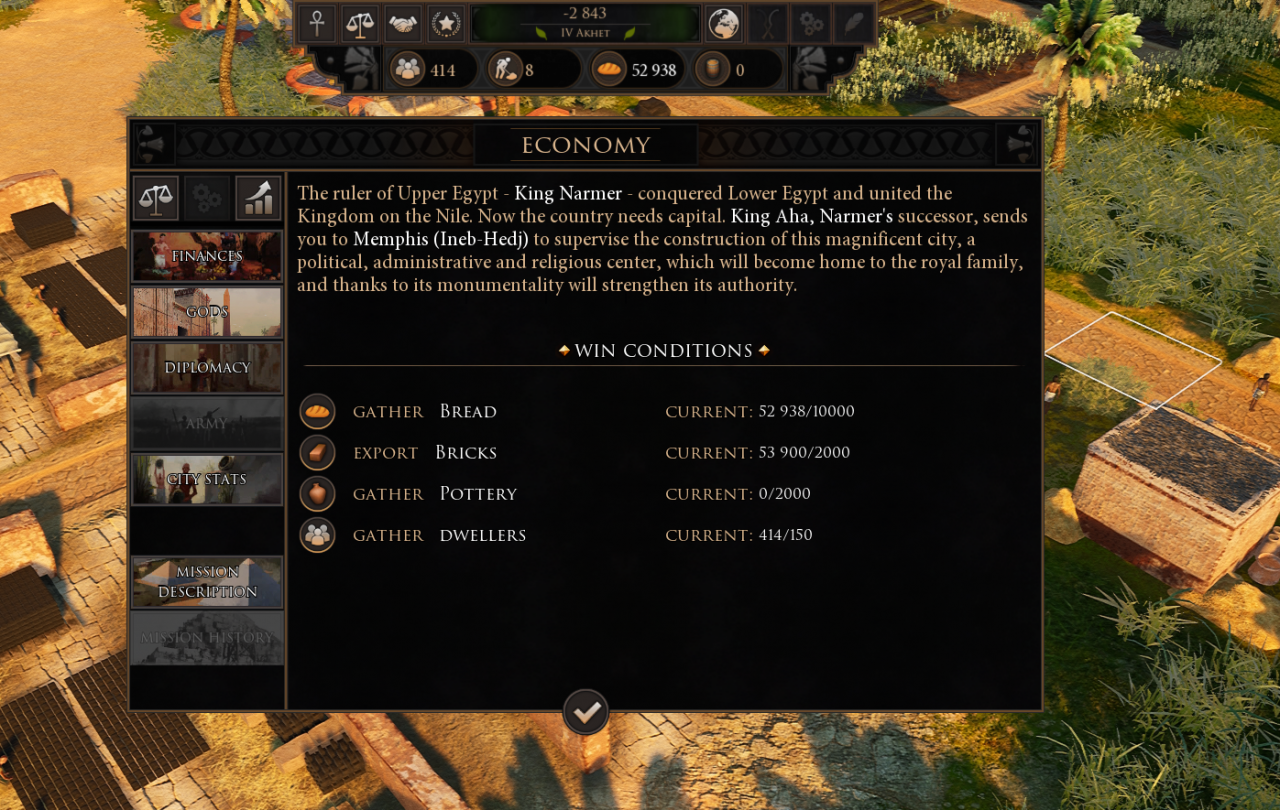
One of many ways to a Victory!
1. Build 8 houses. Build well, fire station and bazaar near those houses.
2. Build a fishing wharf near the Nile River and 2-3 farms. Build a Granary.
3. Build Clay pit at clay spot (the game has few of them available), Brick Maker, and Stockpile.
4. Remember to set a trade route with Abydos in order to receive from time to time Abydos’s Traders. 5. Turn on clay and brick in Economy TAB for export. Set it before you run out of your “bread” currency.
6. Once your settlement is filled with more people (workers) you can build another well and a few more houses (bazaar if needed) and focus mainly on bricks making by building another Claypit and second Brick Maker.
7. At this point your clay pits will produce enough clay and farms will give you enough straw to have stable bricks production and fixed bread income. 🙂
8. Don’t rush into building an empire before your settlement isn’t flowing with “steady” bread as you will need a lot of bread to progress further.
9. There is no need for you to lower wages or set up higher taxes (which aren’t implemented yet). Be kind to your people. Trading with Abydos will be sufficient enough to achieve your Goal! 🙂
Below you can see one of the possible layouts (the numbers of farms increased in the later stage to match brick production (straw) but it started with 3!
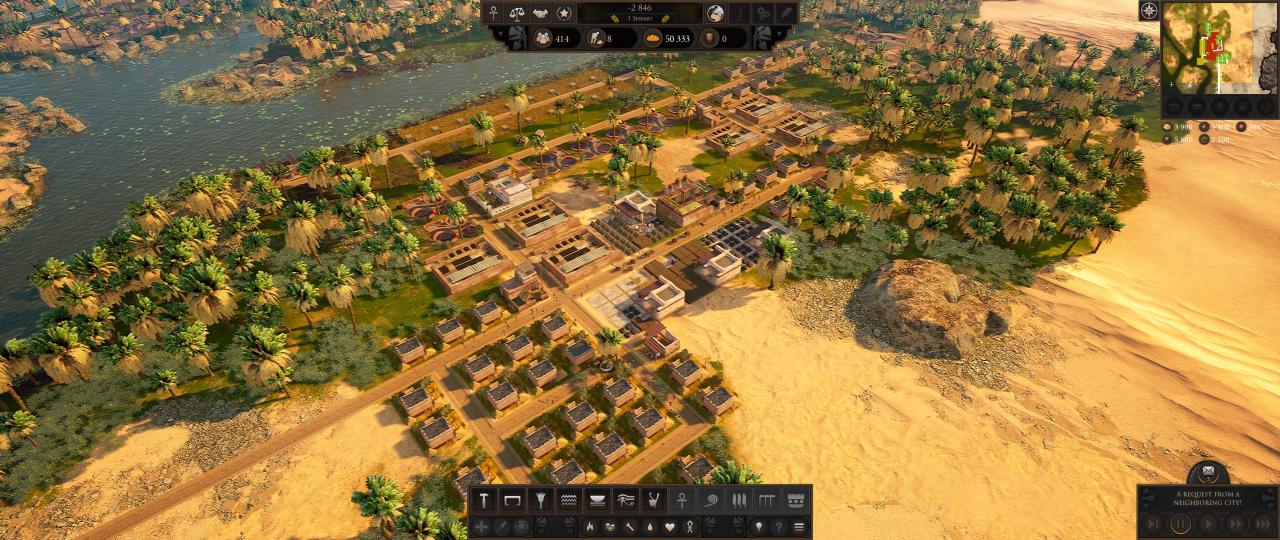
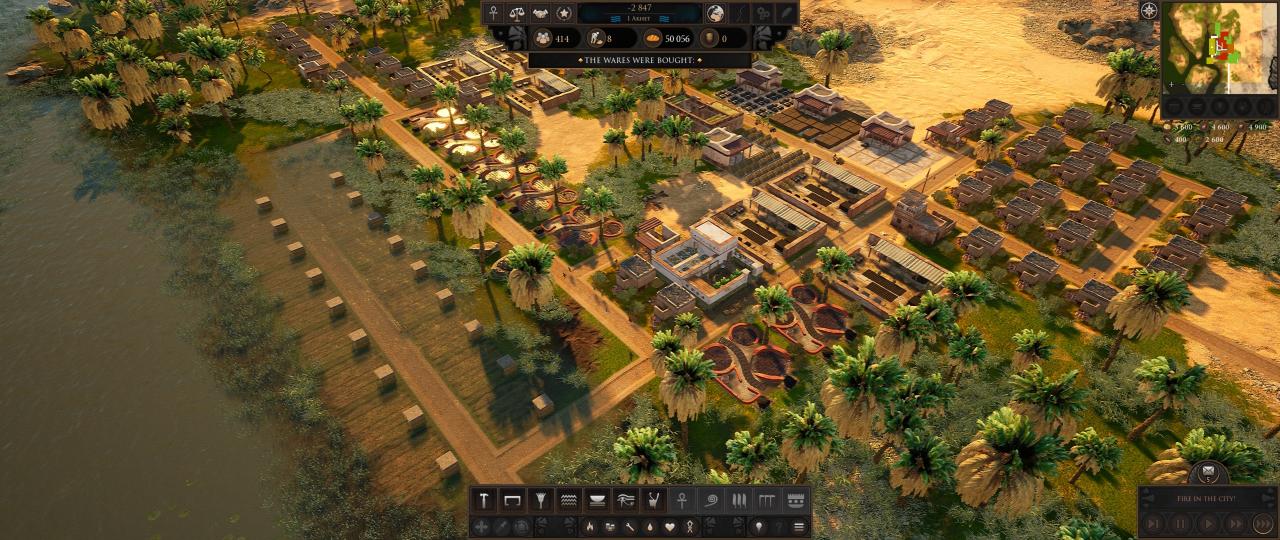
FAQ
Some of the players are experiencing issues with the PLAYWAY launcher, we are working on it!
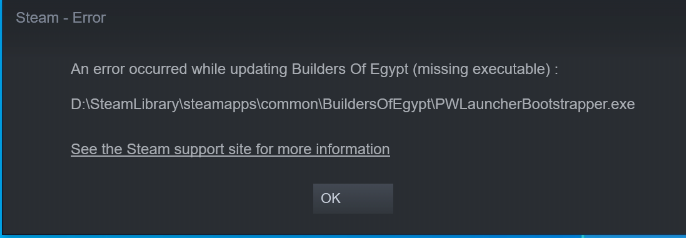
If you are missing launcher files (due to anti-virus) you can download them here:
https://drive.google.com/file/d/1c40vWDsfHwZywv6t_KJrm-dYcq2sox-A/view?usp=sharing, https://drive.google.com/file/d/1vE2cvls1_ti4wiUROtvg3NUV4kM43bRb/view?usp=sharing
https://drive.google.com/drive/folders/1IHcV0QYxOnRT7Nt1ffHIeDw_4SNRwnof?usp=sharing
Before reporting please check if you have all of files showed below:
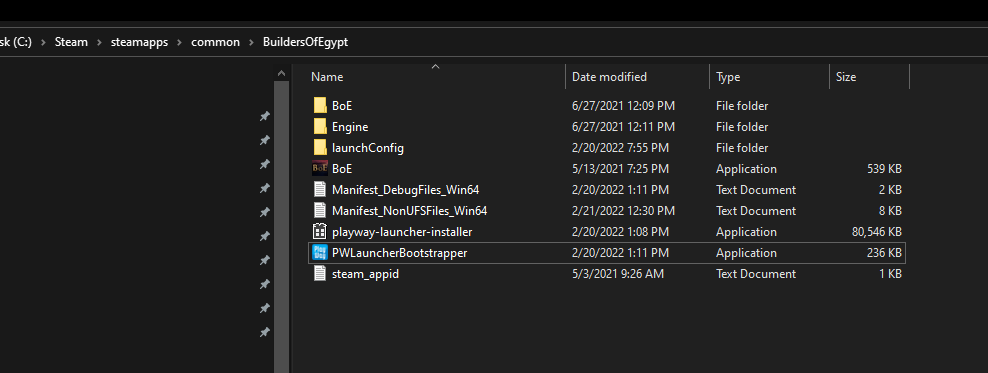
Thanks to eien no shikaku 永遠の刺客 for his great guide, all credit to his effort. you can also read the original guide from Steam Community. enjoy the game.

